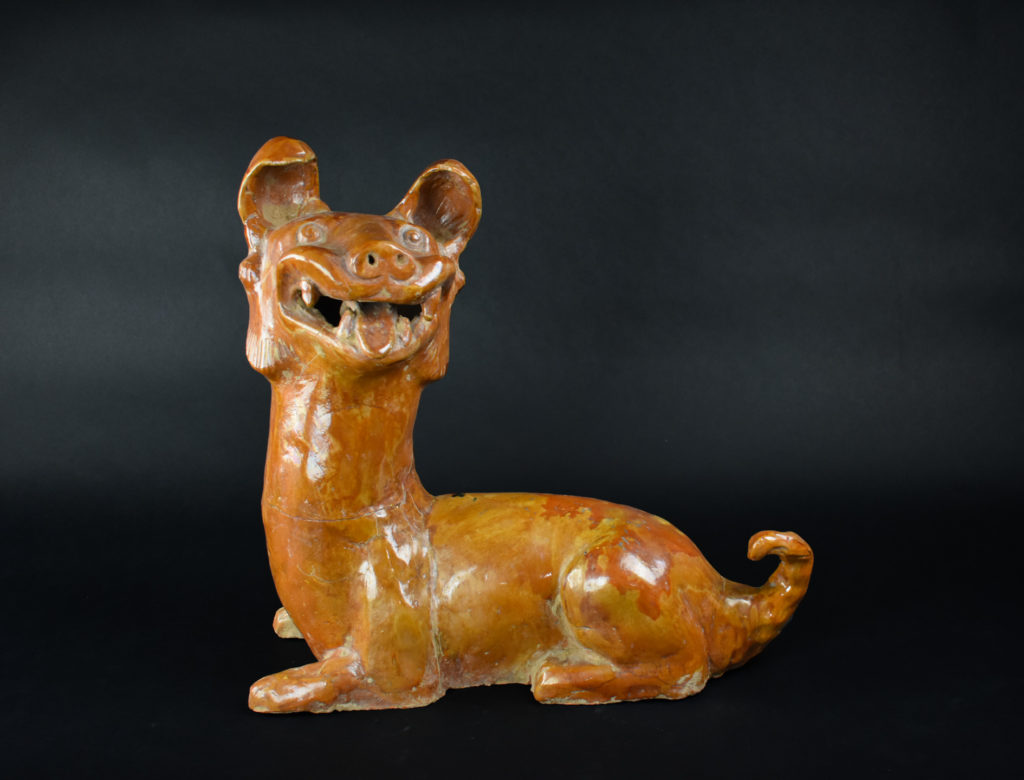- Collections
- Asia & Pacific Islands
- Dog Effigy
Title: Dog Effigy
Date: ca. 200 BC – AD 220
Culture: Han Dynasty (China)
Material: Glazed earthenware
Size: 17.5” H x 17” L
Credit: Gift of R. Weiss
On View: No
Dogs were a key part of ancient Chinese culture. In fact, archaeological evidence suggests the first domesticated dogs originated from East Asia. Given their importance, it is unsurprising that effigies like these are often found in Han Dynasty-era tombs. Anthropologists believe they were meant to keep their deceased owners company in the afterlife or serve as tomb guards.
This is one of the earliest figurative sculptures in the Museum’s collections and displays the dynamic qualities of Han funerary sculpture. Although it is not readily identifiable with any of the breeds found in China, it is typical of the abstracted, angular forms favored during the Han Dynasty.
The dog has an elongated neck, perhaps a deliberate artistic feature to accentuate the idea of movement. The overall impression of the effigy is of a dog suddenly disturbed from sleep, a reference perhaps, to its role as a watchdog. Although this dog is colored amber, it could just have easily been green or yellow.

